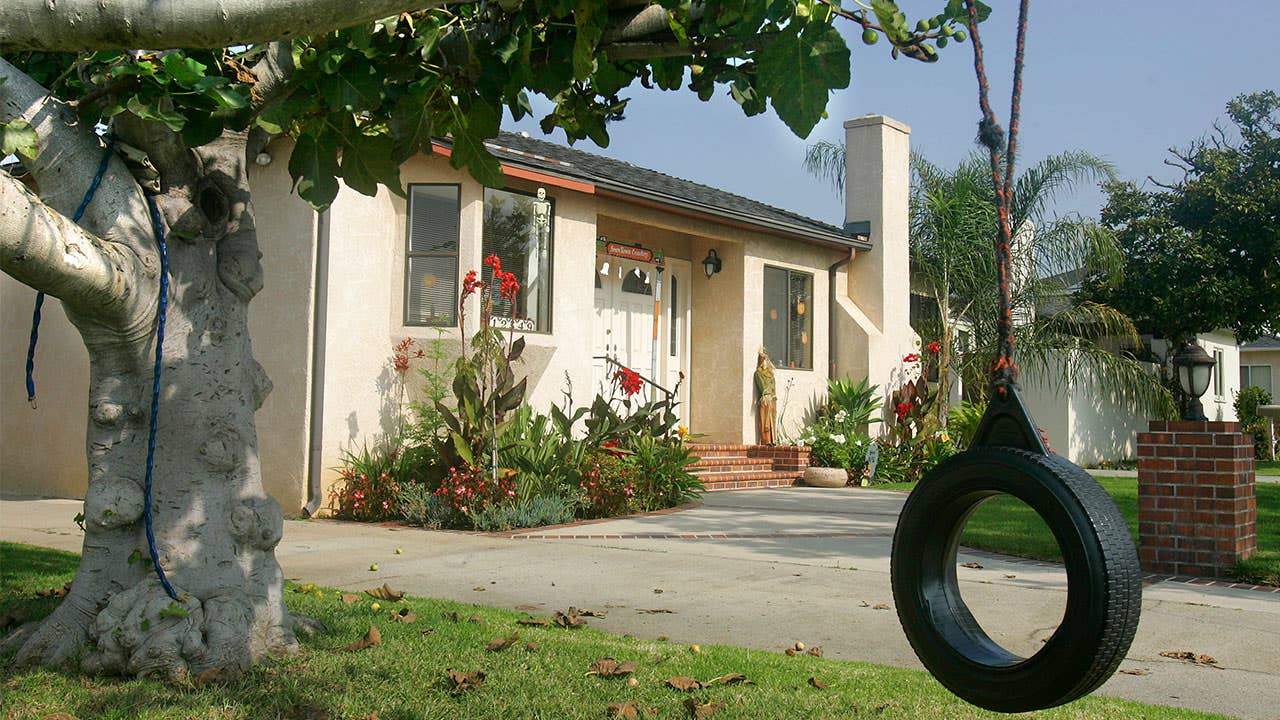Remodel or move? 8 ways to decide what makes the most financial sense

You’ve been in your house for a while and are still fond of the place. But it’s no longer exactly what you need or want.
So, do you put the home up for sale and move out, or upgrade and settle in for the long haul?
To answer that question, you’ll have to think about your emotional attachment to the house, whether renovating will bring a good return on your investment, the shape of the local real estate market and whether you can afford to buy a replacement home.
Regarding the latter: If mortgage rates are high and housing inventory is low, staying put and making do may make more sense. But right now, remodeling is getting expensive, too, what with inflation and supply chain shortages driving up material and labor costs.
Here are the essential issues when deciding whether to remodel your current place and stay put, or buy a different home and move out.
1. Is your home in your heart?
Your emotions will have a lot of say in whether you stay or go.
“Think honestly about your relationship with your neighbors and how you feel about your location and the surrounding area,” says Fred Wilson, a principal with Morgante-Wilson Architects in Evanston, Illinois. “If you have a strong connection to the neighborhood and emotional ties to your home, renovating may be the right answer.”
2. How will you pay for remodeling?
Realistic budget planning is critical when deciding whether to make your current home work or look for another one. “A lot of homeowners don’t know exactly what they want,” says Prashanth Pathy, a real estate broker with Compass in Chicago. “Say they have $50,000 and the contractor says he can do it for that. But then their wishes change, they want different materials, it doesn’t come out as they imagined — and that’s where the budget gets blown up.”
According to HomeAdvisor, the cost of home renovations in 2022 can range between $17,942-$78,263 for an average of $48,002 — though of course there’s enormous variation, depending on what you’re doing and how you’re doing it (DIY vs a professional contractor). For example, remodeling a bathroom typically costs anywhere from $3,000 to $25,000. Upgdrading your kitchen may cost anywhere from $5,000 to $65,000.
And the current state of the economy is ensuring that prices continue to rise. “The construction industry is in the midst of a period of exceptionally steep and fast-rising costs for a variety of materials, compounded by major supply-chain disruptions and difficulty finding enough workers,” according to a Construction Inflation Alert report by the Association of General Contractors of America (AGA). You can expect to see long delays, steep expenses and high demand for remodeling services. Planning your budget with this in mind is important if you do decide to renovate.
If you don’t have the cash to pay for a remodel upfront, consider different methods you could use to finance one.
- Secure a home equity loan.
- Open a home equity line of credit (HELOC).
- Use a personal loan.
- Consider a cash-out refinance.
- Tap into an IRA (up to $10,000 per taxpayer, penalty-free) or borrow from a 401(k).
3. More room or more rooms?
Many homeowners base their decision to sell on the need for more space. However, a smarter layout that adds one more room but not more square footage can help some homeowners avoid moving, says Doug Perlson, New York City-based founder and CEO of real estate brokerage RealDirect.
“A spacious three-bedroom home can often be reconfigured to four bedrooms and allow a family to have a more efficient layout without needing to leave the home they love,” he says. “We recommend laying out your floor plan with a designer and seeing if a reconfiguration could make sense. It is often much less disruptive and expensive than a move, and may solve your problems.”
If you can’t find a spot for a new room? “Maybe it is time to sell,” he says.
4. Can you afford to move?
Does your current home have what you consider to be a serious problem? It could be neighbors you can’t tolerate, a not-so-great school district or a cramped physical setting — including home and yard — that will never meet the needs of your growing family.
If that’s the case, you really have just one choice: Move.
But maybe the issue is that you essentially can’t afford the home you currently have — a situation known as being “house poor” — so a downward rather than upward move is necessary.
Either way, moving isn’t free. Buying a home has plenty of hidden costs, such as escrow, transfer taxes, and moving expenses. Before you decide to move in order to save money, understand the complete costs of buying a home.
It’s a good idea to stay in your house as long as you can, to gain the most equity you can, and recoup any of the closing costs of buying your current house. Many Realtors recommend following the “five year rule” to ensure the equity you have built in your home will more than cover any selling and moving expenses.
However, moving sooner than that is sometimes unavoidable. If that’s the case for you, understand the costs of selling your home after a short period to budget accordingly.
5. How long will a renovation take?
Many people overlook the fact that renovation involves “a serious, long-term commitment in time and energy,” says Pathy of Compass. “They have to get their head around the process — time being the first and foremost consideration.”
He’s not kidding.
A major kitchen remodel involving new countertops, cabinets, appliances and floors typically lasts as long as four months. If ductwork, plumbing or wiring has to be addressed, the job could take longer. A bathroom remodel can require two or three months, while a room addition can take a month or two.
Pathy says you have to be ready to be very patient. “It’s very difficult to live in something that’s being renovated.”
6. Will you earn back the upfront costs?
Before opting to remodel or sell, try to determine what return on investment you’ll see on either option. So says Brian Davis, who has bought, renovated, leased, managed and sold many homes and is director of education for Spark Rental.
If upgrading, “What’s the average return on investment for the renovations you’re considering?” he asks.
Certain upgrades are more likely to help you earn back what you pay. For example, the National Association of Realtors’ 2022 “Remodeling Impact Report” found that the cost recovered for a refinished hardwood floor was 147 percent. The cost recovered for insulation upgrades was 100 percent. But there was typically lower cost recovered for things like kitchen remodels (67 percent) or adding a bathroom (63 percent).
If you’re thinking of listing your current home and buying another one somewhere else, ask yourself whether you’ll be in the new place long enough to recoup the costs of taking out a new mortgage and moving. It typically takes between five and seven years to earn back those upfront costs.
7. Would you be over-improving?
Weighing against renovation is the risk you’ll “over-improve” your home compared with others on the block.
An over-improved home won’t sell for as much in its location as it would in a neighborhood with similar houses, says Kevin Lawton, a real estate agent at Coldwell Banker Schiavone & Associates in Yardville, New Jersey.
“When you are in a neighborhood that has starter homes and smaller homes, adding a large addition or doing an extensive renovation may not yield the return one would expect,” he says.
With one of Lawton’s listings, sellers had added a large, handsome fifth bedroom suite to the first floor. Buyers passed on the house for smaller ones in the same development, and the house lingered unsold even after the sellers chopped $30,000 off the price.
8. What’s the local housing market like?
Making a house purchase solely based on current real estate trends doesn’t always make sense, but understanding the local housing market can help with your decision to move or renovate.
Think about the factors impacting the residential real estate scene:
- Are mortgage interest rates trending high or low?
- How is the inventory of single-family homes?
- Is it a buyer’s market or a seller’s market?
- What’s the pace of sales — how long are listings remaining active?
- How does the cost of buying a house in your town compare to labor costs?
- Are there any gentrifying neighborhoods, where good deals might be found?
Also consider the time of year. Winter is typically a more favorable season for buyers: There’s less competition from other house-hunters, and sellers are often more motivated to lower prices or agree to concessions to close a deal. In contrast, sellers rule in spring and summer, the traditional home-hunting seasons. Weigh how dire the need to move is against the calendar — it can make a big difference in getting a bargain or paying a premium for a new home.
You may also like

How to lose money renovating a home

10 home renovations you can DIY on a budget, and how to pay for them

Should I sell my house or rent it out?

Should you remodel or move? Here’s what to consider


